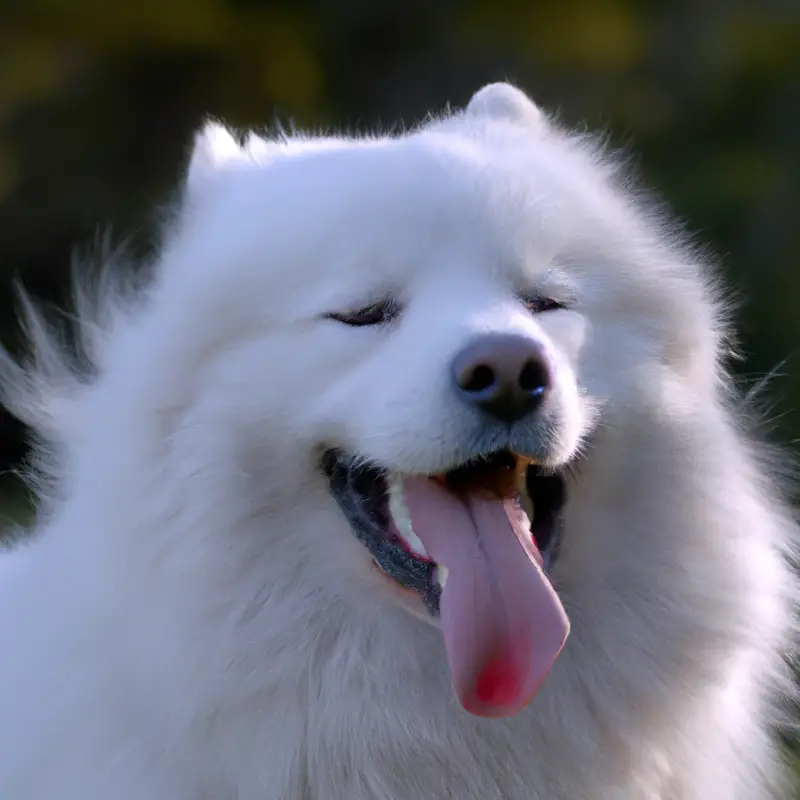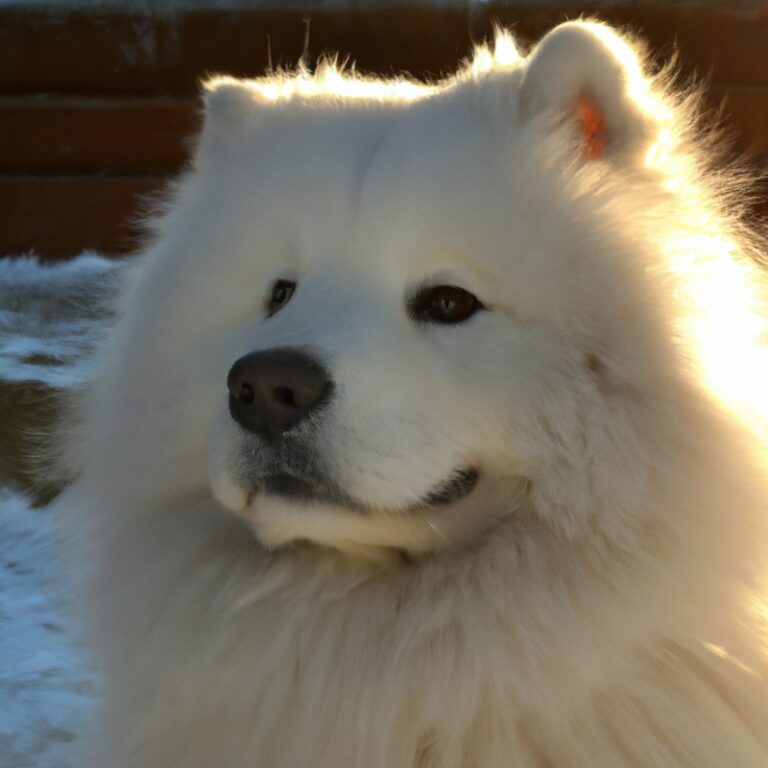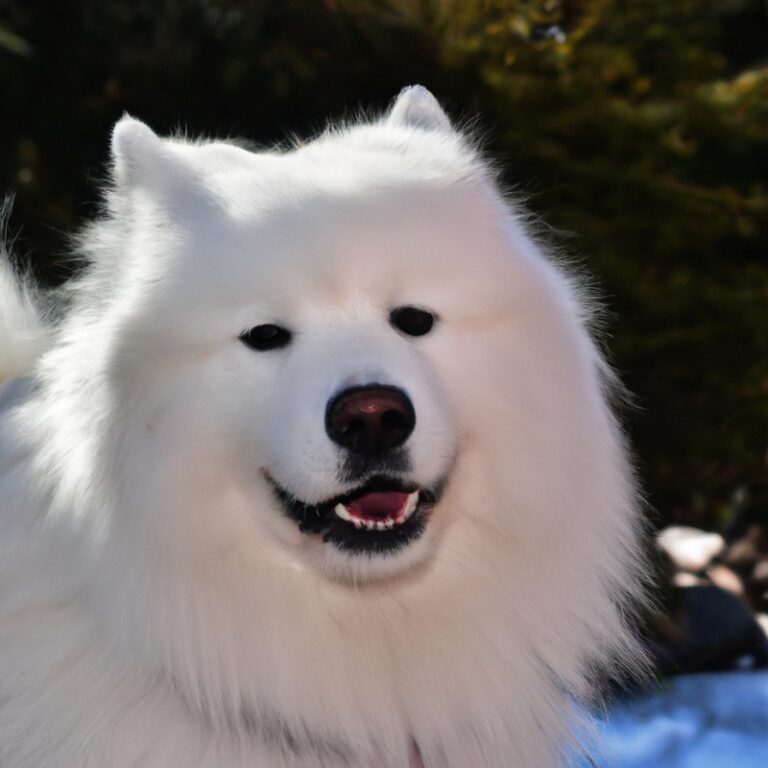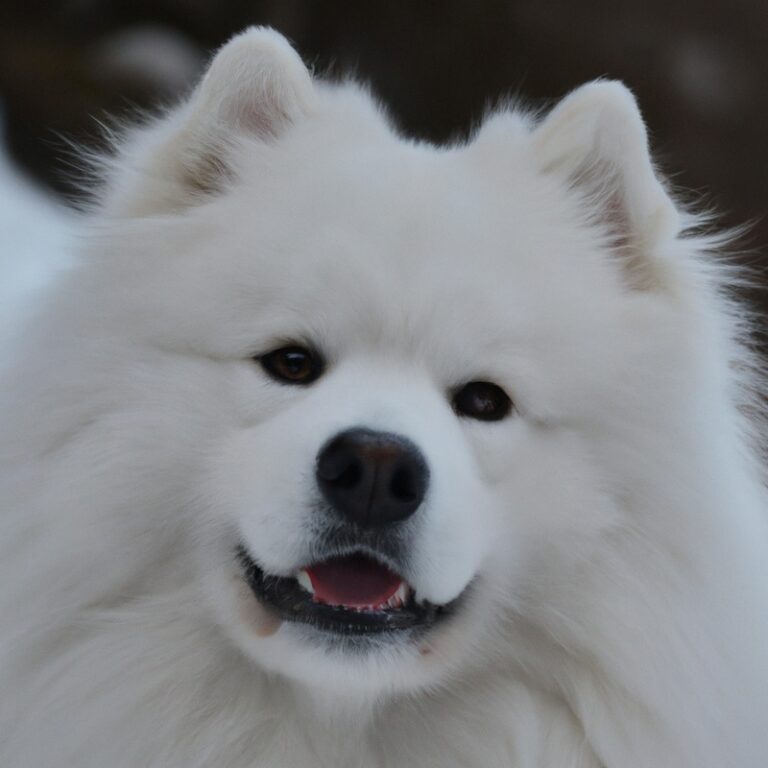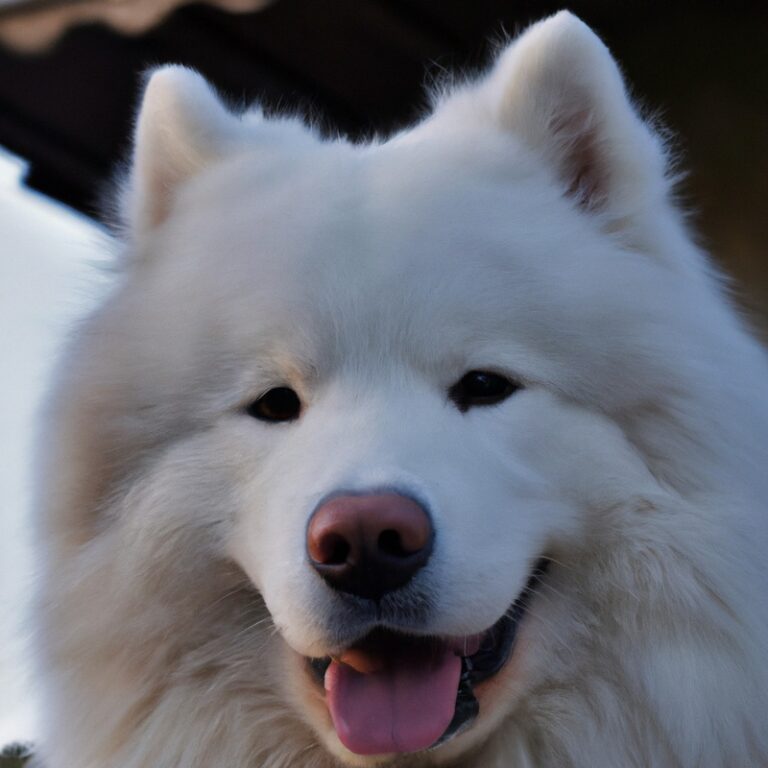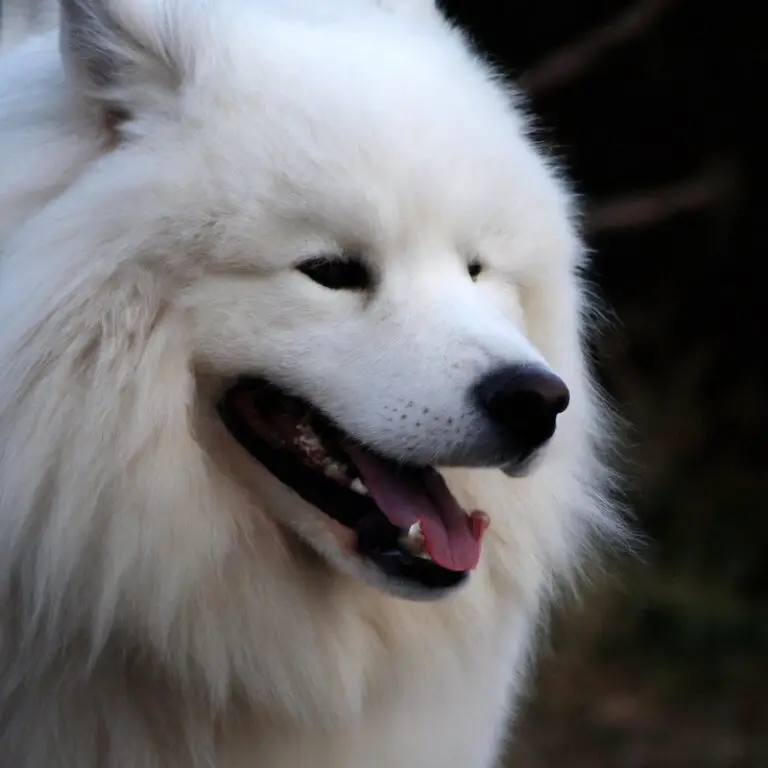What Is The Origin Of The Samoyed Breed?
Key Takeaways:
- Samoyeds originated from Siberia and were bred by the Samoyede people to work as herding and hunting dogs.
- They are one of the oldest and purest dog breeds, with a heritage that dates back thousands of years.
- Samoyeds were primarily used for pulling sleds, herding reindeer, and guarding the Samoyede camps.
- The breed’s friendly and sociable nature makes them popular as family pets today.
Picture this: the vast Arctic expanse, snow-covered landscapes as far as the eye can see, and a resilient and captivating breed of dog known as the Samoyed. But where did these fluffy white pups come from?
Join me on a journey as we delve into the fascinating history of the Samoyed breed.
From its ancient origins with the nomadic Samoyedic people to its role in the Arctic region, these dogs have a rich heritage that spans millennia. Discover how they have adapted to their environments, developed specific traits, and become beloved companions and working dogs.
Get ready to unravel the mysteries behind the enchanting Samoyed breed.
| Origin | Description |
|---|---|
| Siberia, Russia | The Samoyed breed originated in Siberia, Russia, where it was used by the Samoyedic people for herding reindeer, pulling sleds, and guarding their camps. |
| Working Dog | The breed was primarily used as a working dog and played an essential role in the survival of the Samoyedic people in the harsh Arctic environment. |
| Characteristics | The Samoyed breed is known for its friendly and gentle nature, strong work ethic, and thick white coat that helps protect it from the cold. |
| Introduction to the West | The breed was first introduced to the Western world in the late 19th century when explorers brought Samoyeds back to Europe and later to the United States. |
| Popularity | Samoyeds gained popularity as both working dogs and companions, known for their loyalty, intelligence, and sociable temperament. |
Historical background of the Samoyed breed
Ancient origins of the Samoyed breed
The Samoyed breed has ancient origins that can be traced back to the nomadic Samoyedic peoples of Siberia.
These people relied on their dogs for various tasks such as herding reindeer and pulling sleds.
The Samoyeds were highly valued for their endurance, strength, and ability to thrive in harsh climates.
Through their close association with the Samoyedic people, the breed developed its distinctive characteristics and became an important part of their daily lives.
Over time, the Samoyed breed spread beyond Siberia and gained recognition for its beauty and charm.
Today, these friendly and gentle dogs are beloved companions all over the world.
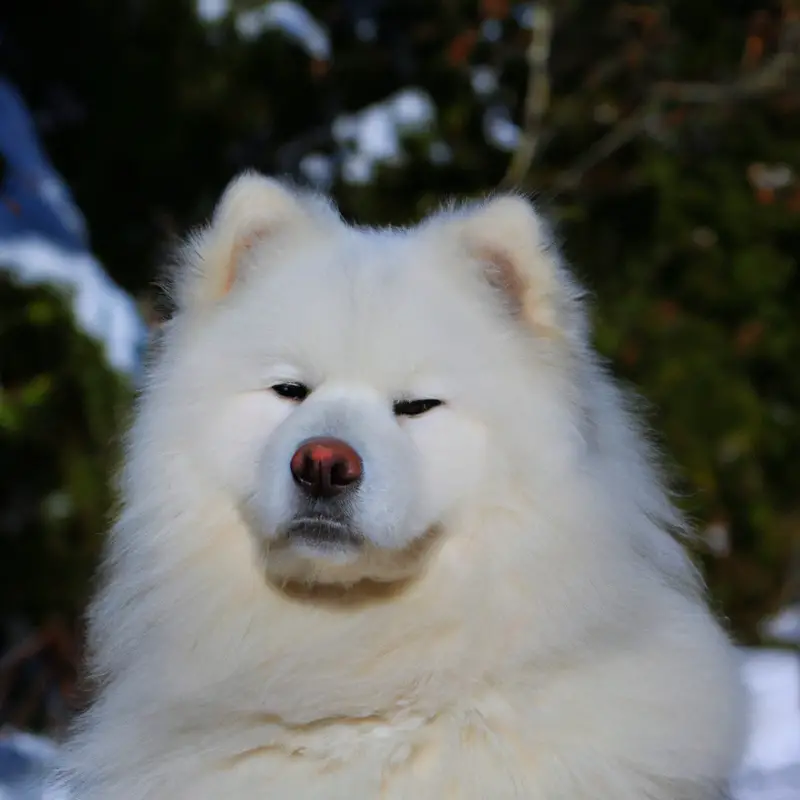
Nomadic lifestyle and the Samoyedic people
Nomadic lifestyle was an integral part of the Samoyedic people’s culture.
They were a nomadic tribe who lived in the vast Siberian tundra.
This lifestyle involved regularly moving from one place to another in search of food and resources.
They relied heavily on reindeer for transportation, food, and clothing.
The Samoyedic people were skilled hunters and herders, adapting to the harsh Arctic climate.
They formed close bonds with their reindeer and utilized their fur and meat for survival.
The symbiotic relationship between the Samoyedic people and their reindeer played a vital role in their nomadic existence.
Role of Samoyed dogs in the Arctic region
Samoyed dogs have played a vital role in the Arctic region for centuries.
Their thick double coat and excellent endurance make them well-suited for the harsh conditions.
The Samoyeds were used by the nomadic Samoyed people for herding reindeer, pulling sleds, and providing warmth in their tents.
These dogs were relied upon for transportation and survival in the Arctic, showcasing their strength, intelligence, and adaptability in extreme environments.
Even today, the Samoyed breed continues to thrive in the Arctic, serving as loyal companions and working dogs in sled races and other Arctic activities.
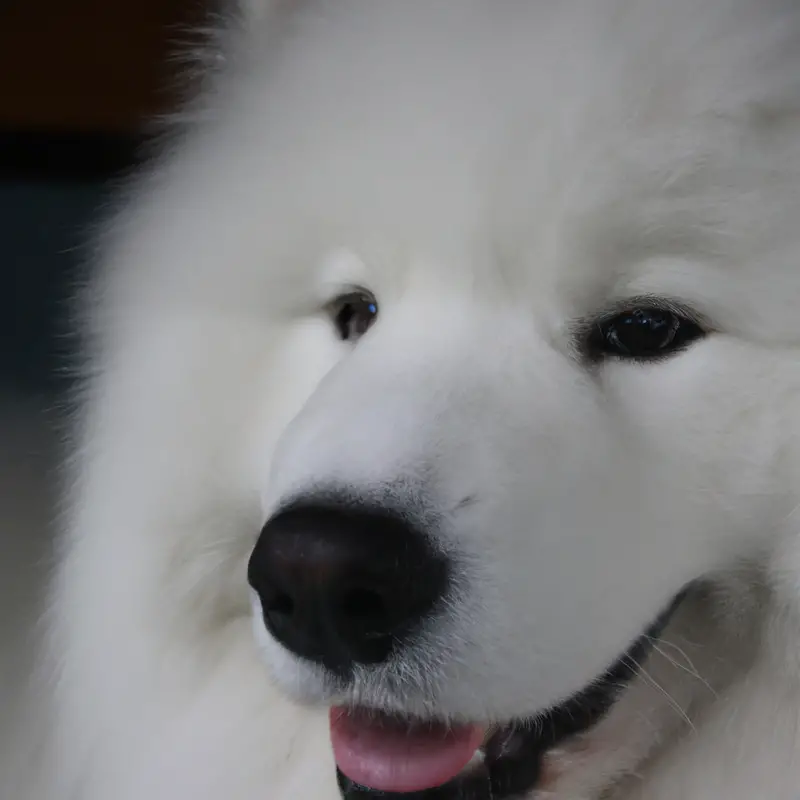
Development and purpose of the Samoyed breed
Roles of Samoyed dogs in the past
Samoyed dogs have played important roles throughout history.
Here are some of their past responsibilities:
- Herding: Samoyeds were used by nomadic Samoyed tribes in Siberia to help herd reindeer. Their thick coats protected them from the harsh weather, allowing them to work in extreme conditions.
- Sled pulling: These dogs were also utilized as sled dogs by polar explorers, including Roald Amundsen. Their strength, endurance, and ability to navigate snowy terrains made them valuable assets in Arctic expeditions.
- Guardian and companion: Samoyeds were trusted to guard and protect their owners’ property and livestock. Their friendly temperament also made them beloved family pets.
- Search and rescue: Samoyeds have a keen sense of smell and are skilled at tracking scents. In the past, they were trained for search and rescue missions, particularly in snowy or mountainous areas.
- Therapy dogs: Due to their gentle nature and ability to provide comfort, Samoyeds have been used as therapy dogs. They have brought joy and companionship to people in hospitals, nursing homes, and rehabilitation centers.
Samoyeds have a rich history of serving humans in various ways, and their versatile nature continues to make them valuable and beloved companions today.
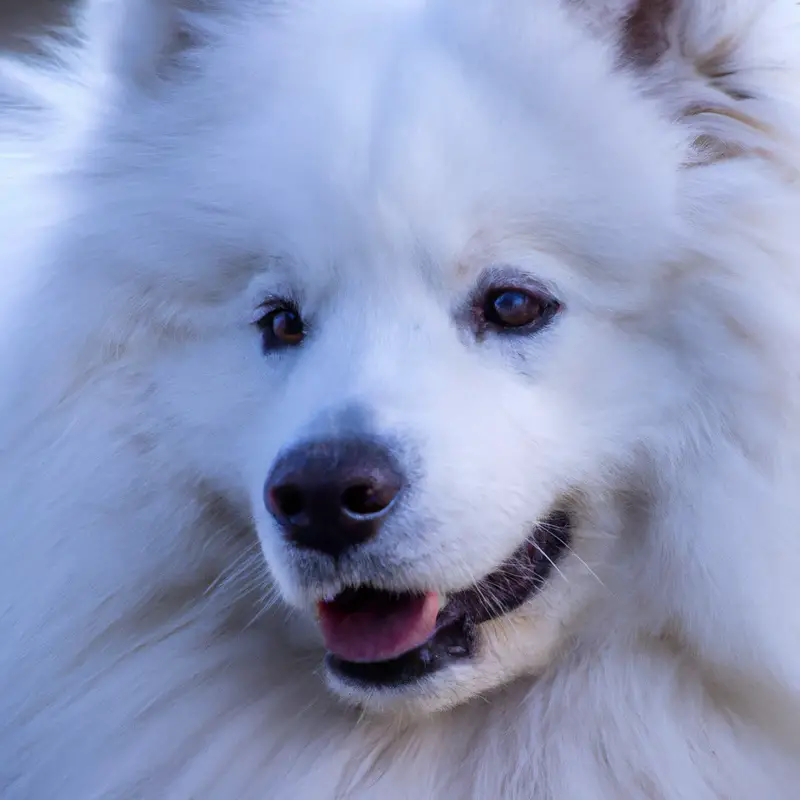
Key traits selectively bred for in Samoyeds
Samoyeds were selectively bred for specific traits that make them unique and well-suited for their original purpose as sled dogs and companions.
- They have a thick, double coat that keeps them warm in cold climates.
- Their coat is also hypoallergenic, making them a good choice for people with allergies.
- Samoyeds are friendly and sociable, making them great family pets.
- They are intelligent and trainable, making them versatile working dogs.
- Their strong and sturdy build allows them to pull heavy loads over long distances.
- Samoyeds have a gentle and peaceful temperament, making them ideal therapy dogs.
- They have a high level of energy, requiring regular exercise and mental stimulation.
- Samoyeds have a strong sense of loyalty and protective instincts towards their family.
- Their smiling face and expressive eyes make them endearing and charming pets.
Significance of Samoyed dogs in sled pulling
Samoyed dogs have great significance in the world of sled pulling. With their strong, muscular bodies and endurance, they excel in pulling heavy loads over long distances in snowy terrains.
These dogs are bred for their pulling abilities and have played a crucial role in transportation and exploration in Arctic regions.
Their intelligence, strength, and willingness to work make them valuable companions in sled pulling, both historically and in modern times. Samoyeds have a natural instinct for pulling and have been used for various purposes, including transportation of supplies, mail delivery, and even racing.
Documentation of the Samoyed breed
Early written records of Samoyed dogs
Early written records of Samoyed dogs can be traced back to ancient Siberia. These records indicate that Samoyeds were highly valued by the indigenous Samoyed people for their herding abilities and their companionship.
The first written account of the breed can be found in the writings of explorers who traveled to the region in the 18th and 19th centuries.
These accounts describe the Samoyeds as loyal and hardworking dogs, used by the Samoyed people for various tasks such as pulling sleds and guarding their camps. These early records provide valuable insights into the history and characteristics of the Samoyed breed.
First recognition by kennel clubs
The Samoyed breed was first recognized by kennel clubs in the late 19th and early 20th centuries.
The Kennel Club in England officially recognized the breed in 1909, while the American Kennel Club followed suit in 1906.
These recognitions played a key role in establishing the breed’s standards and promoting responsible breeding practices.
Today, the Samoyed breed is widely recognized and appreciated for its unique characteristics and traits.
Standardization of the Samoyed breed
Standardization of the Samoyed breed involved establishing a set of breed standards that govern its physical characteristics, temperament, and overall appearance.
These standards help ensure consistency and maintain the breed’s unique traits from one generation to another.
The standards include factors such as size, coat texture and color, head shape, ear size and placement, and overall structure.
Breed clubs and organizations play a crucial role in developing and maintaining these standards through ongoing evaluation and collaboration with breeders and experts in the field.
Cultural impact of the Samoyed breed
Samoyeds in popular culture
Samoyeds have made their mark in popular culture in a variety of ways.
They have been featured in movies and TV shows, often portrayed as lovable and loyal companions.
Their striking appearance and friendly nature have also made them popular mascots for brands and events.
Additionally, Samoyed owners often share their experiences and adventures with their furry friends on social media platforms, showcasing the breed’s charm and personality to a wider audience.
Whether on screen or in real life, Samoyeds continue to captivate and bring joy to people around the world.
Samoyeds as working and companion dogs
Samoyeds are versatile dogs that excel both as working dogs and as companions.
Their original purpose was to herd reindeer and pull sleds in the harsh Arctic environment.
They have a strong work ethic, intelligence, and endurance.
As working dogs, Samoyeds are known for their abilities in sledding, herding, and search and rescue.
They are also reliable and gentle family pets.
They are friendly, loyal, and great with children.
Samoyeds thrive on human companionship and love to be a part of family activities.
They require regular exercise and mental stimulation to keep them happy and healthy.
Overall, Samoyeds have a strong work ethic and make wonderful companions.
Samoyed dogs in art and literature
Samoyed dogs have made appearances in various forms of art and literature, showcasing their charm and beauty.
In art, they have been depicted in paintings, drawings, and sculptures, capturing their fluffy coats and friendly expressions.
In literature, they have been featured in novels, poems, and children’s books, often portrayed as loyal and brave companions.
Their presence in art and literature reflects the enduring popularity and admiration for this beloved breed.
Frequently Asked Questions (FAQs)
What are typical Samoyed breed traits?
Samoyeds are known for their friendly and gentle nature, making them great family pets. They have a thick, white double coat that keeps them warm in cold weather and requires regular grooming.
These dogs are very sociable and love being around people, so they can sometimes suffer from separation anxiety if left alone for long periods.
Samoyeds are also intelligent and trainable, but they can have a stubborn streak at times. They are generally good with children and other animals, but early socialization is important to ensure they develop good manners.
With their happy, outgoing personalities, Samoyeds make loyal and affectionate companions.
How do Samoyed dogs fare in different climates?
Samoyed dogs are known to fare well in different climates, thanks to their thick double coat. This coat provides insulation and protects them from both cold and hot temperatures.
They can handle winter weather with ease, and their coat also helps to keep them cool in warmer climates.
Additionally, Samoyeds have a friendly and adaptable nature, making them versatile companions in various environments. However, it is important to provide them with proper shelter, shade, and plenty of water to ensure their comfort and well-being in extreme weather conditions.
Are Samoyeds good family pets?
Samoyeds make excellent family pets! They are known for their friendly and gentle nature, and they love to be around their human family members. Samoyeds are great with children and are highly tolerant of their playful antics.
They are also very sociable and get along well with other pets.
Additionally, Samoyeds are intelligent and trainable, making them suitable for families who want a dog that can be easily taught commands and tricks. Just remember that they do require regular exercise and grooming to keep them happy and healthy.
How much exercise do Samoyeds need?
Samoyeds are an active breed that requires a good amount of exercise to stay happy and healthy. They should have at least one hour of exercise every day, but they will gladly accept more if you can provide it.
This can include activities like brisk walks, runs, hikes, or even some playtime in a securely fenced yard.
Mental stimulation is also important, so consider adding puzzle toys or training sessions to their routine. Just remember to gradually increase their exercise levels to avoid overexertion, especially during hot weather.
How to find a reputable Samoyed breeder?
Finding a reputable Samoyed breeder can be a daunting task, but there are a few steps you can take to ensure you find a responsible breeder who prioritizes the health and well-being of their dogs.
- Research: Start by researching reputable Samoyed breeders in your area. Look for breed clubs or organizations that can provide recommendations.
- Visit: Once you have a list of potential breeders, schedule visits to their facilities. A reputable breeder will be open to showing you where their dogs are kept and answering any questions you may have.
- Health Testing: Ask the breeder about the health testing they conduct on their dogs. Reputable breeders will often test for genetic conditions common in the Samoyed breed.
- Breeding Practices: Inquire about the breeder’s breeding practices. A responsible breeder will carefully select breeding pairs based on health, temperament, and breed standards.
- References: Ask the breeder for references from previous puppy buyers. This will give you an idea of the experiences others have had with the breeder.
Remember, finding a reputable breeder takes time and effort, but it is worth it to ensure you are getting a healthy and well-cared-for Samoyed puppy.
Final Verdict
The Samoyed breed has a rich history that dates back to ancient times.
Originating with the Samoyedic people in Siberia, these dogs played a vital role in their nomadic lifestyle, helping them survive in harsh Arctic conditions.
Over the years, Samoyeds were selectively bred for their key traits, such as their dense coat and ability to work in sled pulling.
This breed has left a cultural impact, being featured in popular culture, art, and literature.
With their friendly and adaptable nature, Samoyeds make excellent family pets.
So, if you’re looking for a dog with a fascinating history and great companionship, the Samoyed might be the perfect choice.

